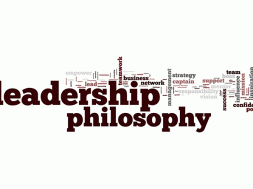
Change Management and How to Make it Work
By Suzanne Morrison-Williams, EdD, Vice President, Academic Affairs, City College
One of the things that is difficult in any organization is Change Management. And this can occur in a number of ways:
- Sale of a company
- Purchase of a company
- Change in management structure
- Change in mission, vision and philosophy
All of the above changes are things that should be carefully thought out and strategized before implementation. People are creatures of habit, and when they are asked to change anything about the status quo, it is extremely uncomfortable – so careful thought should be given to how these changes are implemented to ensure that the ultimate organizational goals and rationale for the changes are implemented. For the purposes of this exercise, we will do a mini case study on how an organization can purchase another organization and successfully manage the change management process.
When I first started my doctorate many moons ago, I was already an Academic Dean. I saw no reason to pursue a degree in a job I already had. Instead, I chose a degree in Organizational Leadership because I felt that it would give me a broader scope. And while I remain in the field of education, I’ve found that it is having this broader scope of knowledge and skill that has allowed me to occupy leadership spaces. The pandemic has created a lot of changes over the last year. Some companies have been gobbled up by larger companies or merged. As more companies embrace remote working, this is again creating change. It behooves any leader to understand the basics of change management and how to use it effectively.
The decision to purchase or sell a company
Everyone knows that companies are bought and sold every day, that’s a given. Nobody really has issues with this unless it radically shifts their personal lives such as hours worked, pay, supervisor and the level of work that is expected of them. If everything stays status quo and all that changes is a logo and the company name on the paycheck, people are usually fine. However, when massive changes occur, employees get nervous and often feel like they should jump ship.
The way to quell mass hysteria is to communicate. Now that sounds simple, but oh boy can communication get screwed up. Remember, conflict is simply when individuals’ expectations are violated; what effective communication will do is allow employees, team members and others to understand the who, what, why, when and how of the changes so that they can adjust accordingly. The worst thing that can happen is that communication is sparse, uninformative or non-existent. It’s critical to communicate. In fact, there should be formal communications established on a routine basis. If this is a short-term issue, then there should be weekly communication. If it is a midrange issue, then maybe there is biweekly communication and if this is a process that will take a year, then monthly communication is key.
My suggestion is that there is always someone or a team of people who are analyzing the current company, the company to be purchased, and the marketplace to ensure that the best decisions are always put into place.
This person or team is a bridge? Why a bridge? Well, this bridge individual serves a number of functions. This person is (a) the eyes and ears of the organization who is going to be taking over, (b) they can begin to share information about the new parent organization and (c) they are also assessing the climate and culture of the organization to be purchased to make ongoing plans for how the merger will take place. This ‘bridge” between the two organizations is key. This person (or it could be a team of people) is looking at and assessing everything that is happening and helping to make decisions about how things will move forward. They are learning the systems, policy, procedures, culture, norms and personality of the organization to be acquired. They are learning who are the formal and informal leaders in the organization; who has the power, who has the knowledge and how people really feel about the change. They are mission critical to advising the parent organization about how they should move forward and proceed. Failure to do this will often result in many mistakes and missteps due to a lack of informational awareness.
Communication
And WHO does the communication is critical. If the entire management team is staying in place, then it should be communicated that management will be similar and ongoing, this allows staff to feel a sense of continuity. The president or highest-ranking person who is on the staff can be the one sending out the communication. If I am advising an organization that is taking over a company, then I’m going to suggest that they either (a) hire a consultant to serve as a bridge or (b) relocate someone from the buying group to the group being bought to act as a bridge.
Communication is either happening through (a) an organizational leader (b) the leadership group or (c) an alternative is an established person from the parent group who is now communicating with the organization to be acquired as part of an ongoing communication channel. The advantages of using this “bridge” person are that the people in the organization will get to know this person and will have an opportunity to build trust and relationships that will benefit the actual transfer of power when it does occur. It is very jarring when on April 1, the management team of X, led by Y is suddenly no longer in charge; and, instead, there is now the leadership team of A, led by B who are the new sheriffs in town. Anyone who has ever been a part of a change like this has seen how many people simply exit stage left, due to their inability to process the change.
In addition to the fact that (a) communication MUST occur and (b) the person(s) communicating is/are critical, the other important factor is (c) the mode and vehicle for communication. Full disclosure – I am a Gen Xer and think email is phenomenal. It allows you to communicate to a wide group of people, disable responses, add in images and links, and ensure that everyone receives exactly the same message at the same time. Now there are other modes of communication:
- Formal meetings
- Informal meetups
- Lunch and learns
- Newsletters
- Internal messaging services
Now all of these have a place and can be used, but determining where and when to use those mediums is also important. Here is what could happen.
- The announcement about the purchase is done via email with links to the new company plus lead team member bios, etc.
- Then smaller meetings are held with departments and key stakeholders to communicate the plans for the change and anything that is pertinent to be communicated at the time. This is the perfect time to introduce the “bridge person” to everyone.
- Newsletters are a great way to communicate cultural shifts by putting in employee-friendly items were the organization can blend in new staff members and traditions. If there are changes to the logos, then this can be communicated this way or via email.
- Informal meetings and lunch and learns are great ways to introduce the culture of the new parent organization to the general staff in a more informal and relaxed way.
- Internal messaging systems are also ways to communicate. I am not a fan because it seems a little familiar in a work/professional setting. No important data should ever be communicated in messaging systems. This should be used not for policy updates or changes, but just as a way to keep in touch with members. Messaging systems can be inherently distracting to the workflow and should be used minimally. However, there are systems like Microsoft Teams that do work as a collaboration tool for working across platforms.
The bottom line is – communicate, often and effectively. Keep all communication channels open so that the communication flows both ways. From the parent organization to the organization to be acquired with details about the vision, mission, strategy and direction and from the organization being acquired back up to the parent organization to ensure that the message sent is the message received and that the team members feel good about the shifts and changes occurring. And, that if there is any level of unease, discomfort, displeasure or anger, that it can be managed appropriately. Effective communication will avoid outright mutiny or subtle acts of rebellion which then derails the process.
Central or distributed management and leadership and creating the cultural shift
Often leadership is central, while management and supervision are local and decentralized. That central leadership will determine all the core items such as vision, mission, strategy and direction. Often at the local level, implementation can take on flavors, especially if there are geographical and cultural differences between the central leadership and local affiliates. It is important to note that what works well in Region A may be an abysmal failure in Region B for any number of factors including culture, staffing, geography and long-standing norms. The one size fits all approach may not be a good plan.
I am currently located in Fort Lauderdale which is very urban and a fairly big city. The school I worked at had another location a mere 50 miles away in Miami and those two schools could not have been more different. The Fort Lauderdale campus had one ethnic makeup which had a huge impact on the campus culture, while the Miami campus had a different ethnic makeup which made it have a totally different culture. The same organization had to do things differently just based on socio-cultural influences. Then when those two campuses were compared to the Gainesville campus, the differences were even starker with those students in a whole different socio-economic bracket. Management for these three campuses looked very different based on geographic details.
Here is where the “bridge person or team is key.” Between the signing of the intent to sell document and the actual merger, the bridge team will be “boots on the ground” making assessments on the status quo and suggestions about how things should be done moving forward. What does that look like in reality? The bridge person or team has been at the local site for a few weeks or a few months.
- They have assessed the buildings, the fixed capital and assets.
- They have met with all the managers and supervisors.
- They have been working with HR on job descriptions, offer letters and who will stay with the new organization.
- They are hiring for any new roles or for gaps that will be created.
- They are creating a new organizational structure if necessary.
- They have been working with accounting and finance looking over the books and determining if and where there is bleeding and unnecessary spending and if that spending can be changed to be more cost-effective.
- They’ve begun meeting with local suppliers and clientele.
- They have looked at all the contracts and kept some, closed some and started new ones.
- They have reviewed the regulatory environment to ensure compliance.
- A SWOT analysis and market survey are complete.
- They have researched the reputation of the company through Google, Yelp, Glass Door and other online platforms.
- They attended formal and informal meetings to take the temperature of the local team.
- They have identified problem persons and rising organizational stars.
- They have created methods to build coalitions of support.
- They have examined the systems in place to determine what is effective and efficient and should continue.
- They have identified new things which should be implemented for efficacy, staff productivity and satisfaction.
- They have begun slowly implementing the ideals of the new culture to be implemented.
Here is an example of how that would work in one department (HR) and involve the following items.
- Onboarding
- Training
- Benefits
- Performance evaluations
- Employee recognition
- Offboarding
The organization needs to look at all the pieces and determine what the decisions will be about how to manage the life cycle of the employee.
- How will HR work with the new organization and provide a bridge and transition to the new organization? Are the HR policies consistent and equitable across the two organizations? What changes will need to be made and implemented? Are those changes beneficial to everyone? How will those changes impact the new organization? It’s essential that employees know what benefits will be available to them and how these benefits will impact their paycheck. It’s great to have insurance, but if employees suddenly realize that with the new company, the same policy will now cost hundreds of dollars more this could cause a problem or employees to leave. Similarly, if there suddenly is no dental, or a different 401K match or no educational reimbursement, all this needs to be communicated ahead of time so that staff can make decisions about their next steps. Attempting to hide things that may be viewed as negative is disingenuous and will not endear the organization to the employees.
- Since the new organization will need to be onboarded to the new culture, it’s essential that tools are created to allow this to occur. Simply hiring people into a new organization without properly explaining vision, mission, goals and objectives is a formula for disaster. Employees should have access to all pertinent data such as employee manuals and anything else to help them understand the new organizational norms.
- Once the new staff has been onboarded, then training on expectations within the new organization should commence pretty quickly. This allows the team members to become immersed in the new culture as quickly as possible. The biggest failure in most organizations is no or very ineffective cultural and onboarding training.
- Everyone should always know how their performance will be measured. If this is changing, then this should be part of the onboarding experience. Employees should know they are starting with a clean slate and be allowed to grow within their current and/or new role.
- And one of the ways in which a new management/leadership team can work to build rapport and camaraderie in the new reality is to take the time to recognize individual employees. The leadership team should make this a key focus as they are assuming leadership and overall management.
- And finally, if and when employees choose to separate from the company, it’s essential to have thoughtful conversations about why so that the organization can work to make it better and stronger for those who remain. It is inevitable that in a purchase, sale or merger, there will be losses and casualties, both voluntary and determined. But if the persons leaving are allowed to discuss the why’s of their decision to leave, then that can allow the management and leaders to create better systems and processes moving forward.
Throwing the baby out with the bathwater
Now, just because an organization is being bought or merged does not mean everything needs to change. In fact, the role of the “bridge” person/team is to determine:
- What is currently in place that is highly successful?
- What is currently in place that is efficient and effective?
- What is not working but doesn’t need to change immediately?
- What are the pain points that if changed will create immediate change and good rapport?
- What if changed makes the organization most successful?
The leadership should focus on these five key elements. Keep what works, change what doesn’t. I once saw an acquisition where they took a functional HR process using a single system and changed it to one using four different systems that just resulted in more work for everyone, less efficiency and the entire team being annoyed and aggravated. This was what I call taking a size ten foot and attempting to shove it into a size seven shoe simply because the cheaper, more labor intensive outdated method was one the parent organization was accustomed to using.
A bridge person/team would have established that while the current system had a high implementation cost, that cost would be recovered over time through (a) reduced employee time used on the system and (b) one system versus four equals less money over time.
As part of this new organizational model, the parent organization needs to look not only at the organization it is purchasing and the human capital there, but it also needs to look at its parent organization and ensure that the people who are in charge of now larger groups, departments and functions have the skills, ability and inclinations to scale to the new job expectations. Often there is so much focus on the new organization that the ones who are left to run the show falter because little thought was given to their abilities and skillsets. And now what you have is a group of team members in the acquired organization who have little faith in management and leadership because they are witnessing in real time, some peoples’ inability to actually do the full scope of the new job.
Also, be mindful of the people who are now being put into management. Other horrors I’ve seen are people who had a basic job and with an acquisition became the head of a department. Often, they have no formal education and or training. Again, another formula for disaster.
Un-empowered employees
When people ask me what my Leadership style is, I say Servant Leadership. What is that?
Servant leadership is a leadership style and philosophy whereby an individual interacts with others – either in a management or fellow employee capacity – to achieve authority rather than power. The system embodies a decentralized organizational structure. A servant leader shares power, puts the needs of others first, helps individuals develop and optimize performance, is willing to learn from others, and forsakes personal advancement and rewards. Servant leaders concentrate on performance planning, day-to-day coaching, and helping people achieve
My entire goal as a leader is to empower my team to take action. I feel that in being a servant leader I am empowering each person in the organization to be able to do their jobs successfully. My job is to clear out the roadblocks for them to have autonomy. I worked for an organization once where I discovered the concept of “learned helplessness.” The managers had been so accustomed to talking with the leader every day and getting their “marching orders.” So much so, that when he left they felt paralyzed with fear to make any decision. First, because they had never done it; second, because they feared making any decisions; and third, they feared retribution or scolding if, for some reason, the decision ended up creating an unforeseen issue.
There is nothing that is more the kiss of death with a merger or purchase than when employees ask a question and they are greeted with the trifecta of (a) we don’t know (b) a decision hasn’t been made about that yet or (c) I need to talk with so and so as the standard answers to any questions. What that indicates is that there has been no carefully thought out game plan and that answers reside with only a few in the organization. So now there will be stasis and stagnation while everything is funneled up and down to these power brokers to make decisions. What employees do at this point is simply slow their activity down to the rate of change and that creates an overall decrease in productivity and organizational morale.
Change management and organizational culture
A leader cannot create a culture. Culture is what happens every day in an organization. Culture is how people feel about the organization and the leaders. Culture is how the team members treat each other; as a reflection on how the organization treats its members. It is, however, the job of the leaders to create an atmosphere in which a ‘healthy’ culture can flourish. And when there is change management occurring, it is the leaders’ job to ensure that they do the things necessary to foster a healthy culture.
For effective change management leading to a healthy organizational culture, the leader ensures:
- That they fully understand the system, culture, people, opportunities, threats, strengths, weaknesses and areas of opportunity of the organization(s) which they are leading.
- That they model the behavior they want to see in the organization.
- That they lead the organization using good effective verbal and non-verbal communication tools.
- That they analyze all the various team members and players and ensure that (a) everyone is sitting on the right seat in the bus (b) everyone has the skills, abilities, education, training and (c) willingness to do the tasks.
- That change is not being made for change’s sake, but that changes are aligned to a healthy culture, productivity and achieving organizational goals.
Change management IS going to happen. HOW it happens and HOW successful the implementation is up to the leaders.
SUZANNE MORRISON-WILLIAMS, EdD is the Vice President of Academic Affairs for City College, and has worked in this capacity at City College since September 2009. She has two degrees from FIU. A Bachelor’s in Communication with a specialization in Public Relations (1993) and a Master’s in Public Administration (1997). In 2015, she earned an EdD in Organizational Leadership from Argosy University. Her area of specialization for her dissertation was mentorship and the African-American female professional.
Prior to joining City College in 2009 as the VP, she had worked with the company between 1997 and 1999 as a faculty member. Additionally, she has worked at Florida International University and The Art Institute of Fort Lauderdale, part of the EDMC system. She has worked as a Registrar, faculty member, Department Chair, Faculty Development Director, Assistant Dean and Associate Dean.
Dr. Morrison-Williams is a transplant from the island of Jamaica and resides in South Florida. She is the owner of Dr Sue Speaks LLC which is a Leadership, Management and Empowerment organization. Dr. Morrison-Williams is a certified Life Coach and specializes in working with women, especially BIPOC women on Leadership Coaching. Her website is www.drusuespeaks.com and she can also be found on LinkedIn at https://www.linkedin.com/in/dr-suzanne-morrison-williams-7467b07/ or on Instagram as @drsuespeaks. In 2020 she authored a book, BossLadyship: Color me a Bosslady which is currently available on Amazon in Kindle and printed format.
Contact Information: Suzanne Morrison-Williams, EdD // Vice President, Academic Affairs // City College // 954-492-5353 // smw@citycollege.edu // https://www.linkedin.com/in/dr-suzanne-morrison-williams-7467b07/











